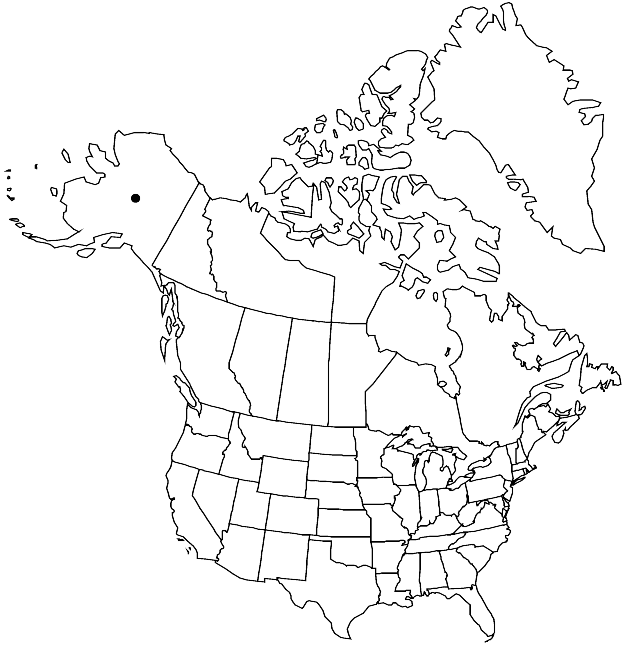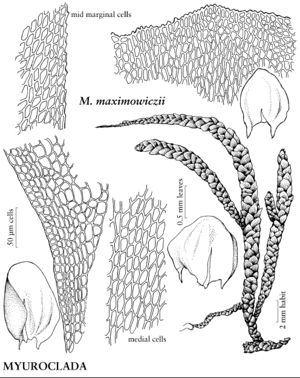Difference between revisions of "Myuroclada maximowiczii"
Bryologist 59: 1. 1956.
FNA>Volume Importer |
FNA>Volume Importer |
Revision as of 19:46, 24 September 2019
Plants glossy. Stems 1–5 cm, 0.5–1.5 mm wide; rhizoids confined mainly to creeping parts of stem. Stem leaves 0.5–2 × 0.5–2 mm; margins somewhat recurved near base; alar cells not sharply differentiated from basal cells; laminal cells 35–45 × 5–7 µm, smooth. [Seta 1.5–3 cm. Capsule 1.5–2.5 × 0.9–1.2 mm; operculum 1–1.5 mm; exostome teeth linear-lanceolate, often filiform, striolate and orange-brown proximally, papillose distally; endostome equal to exostome in height, segments filiform distally, perforate, cilia 2].
Habitat: Flood zones along rivers, terrestrial on silt, rock, logs, tree bases and trunks, forests, walls in urban habitats
Elevation: low to moderate elevations
Distribution

Alaska, e Asia (China, Japan, Korea, Russia), introduced in Europe.
Discussion
Myuroclada maximowiczii is rare in the flora area, found only in scattered locations in Alaska. The species resembles an overgrown Myurella julacea, but the smooth laminal cells and clearly costate leaves readily separate it. Sporophytes are lacking in North America.
Selected References
None.
